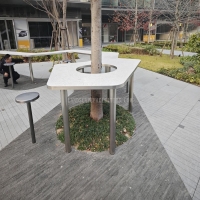Welcome to the website for landscape facilities products and knowledge.
How does the table’s design accommodate cultural preferences in different global markets?
The design of tables varies significantly across global markets, reflecting deep-seated cultural preferences that influence everything from dining habits to social interactions. In Western cultures, particularly in Europe and North America, tables often prioritize individual space and formal dining experiences. Standard dining tables typically measure 28-30 inches in height, accommodating chairs and promoting upright postures during meals. The materials range from solid oak in traditional American households to sleek glass and metal in contemporary urban spaces.
In contrast, East Asian markets demonstrate distinct preferences rooted in centuries-old traditions. Japanese chabudai tables stand merely 15-20 inches high, designed for floor seating that aligns with tatami mat culture. These convertible designs often feature foldable legs, allowing easy storage in compact living spaces common in Japanese homes. Similarly, Korean tables tend to be lower than their Western counterparts but slightly higher than Japanese versions, reflecting the cultural practice of sitting on cushions rather than directly on floors.
Middle Eastern table designs frequently incorporate intricate patterns and lower profiles to accommodate traditional floor seating during large family gatherings. Ornate wooden tables with mother-of-pearl inlays reflect the region's artistic heritage while serving practical purposes for communal dining. The circular shape dominates in many Arab cultures, symbolizing unity and equality among participants.
Scandinavian markets favor minimalist, functional designs that embody the hygge philosophy - emphasizing warmth and simplicity through light-colored woods and clean lines. These tables often feature extendable mechanisms to accommodate the cultural importance of family gatherings during long winter months. The emphasis on sustainability resonates with Northern European values of environmental consciousness.
Latin American table designs frequently incorporate vibrant colors and durable materials suited for both indoor and outdoor use, reflecting the region's climate and social lifestyle. Larger tables that accommodate extended families remain popular, with handcrafted elements celebrating local artistry. The use of weather-resistant woods like teak addresses the preference for alfresco dining.
Manufacturers targeting global markets must consider these cultural nuances through comprehensive market research. Successful table designs often incorporate adjustable elements, modular components, and material choices that respect cultural traditions while meeting modern practical needs. The integration of universal design principles with culturally-specific elements creates products that resonate across diverse markets while maintaining functional excellence.
Related search:

Recommendation
An outdoor bar counter with stainless steel and terrazzo materials in an irregular shape